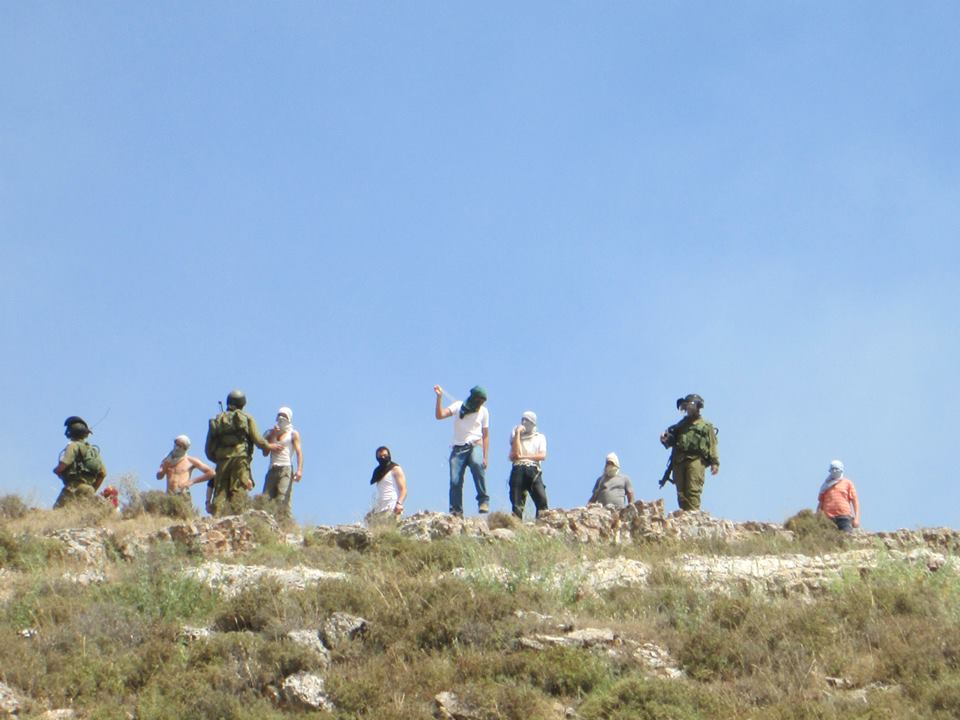Year: 2013
-
Israeli forces violently suppress villagers working their land in Nabi Saleh
31th May 2013 | International Solidarity Movement, Ramallah Team | Nabi Saleh, Occupied Palestine Unlike in previous demonstrations, two army jeeps invaded Nabi Saleh today an hour before the demonstration was due to begin. After midday prayers, over 60 villagers, joined by a number of Israeli and international activists, marched from the center of the village…
-
Increase in military and settler violence against Palestinians in the South Hebron Hills
31th May 2013 | International Solidarity Movement, Khalil Team | South Hebron Hills, Occupied Palestine During the last week Israeli military presence has increased dramatically in the area which Israel designates as Firing Zone 918, in the occupied West Bank. In recent days, military vehicles and helicopters have been surrounding villages in the area, including…
-
Arson attack on Asira village by illegal settlement of Yitzhar
30th May 2013 | International Solidarity Movement, Nablus Team | Asira, Occupied Palestine At 1.30pm today, 30th May, thirty settlers from the illegal settlement of Yitzhar trespassed on to land above the village of Asira, lighting fires and throwing rocks at around seventy villagers who came to extinguish the flames and defend their village. Israeli…


